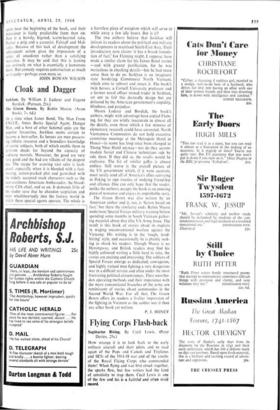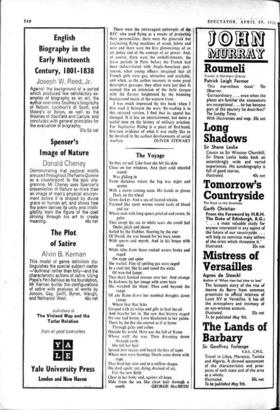Flying Corps Flash-back
How strange it is to look back to the early military aircraft and their pilots and to read again of the Pups and Camels and Triplanes and SE5s of the 1914-18 war and of the youths of the Royal Flying Corps who commanded them! When flying and war first struck together, the sparks flew, but few writers had the kind of sensitivity to trap them. Cecil Lewis is one of the few and his is a faithful and often vivid record. There were the extravagant extroverts of the RFC who used flying as a means of projecting their personalities; there were the gimcrack but fascinating flying machines of wood, fabric and wire and there were the first glimmerings of an air policy and of the concept of air power. And, of course, there were the embellishments, the leave periods in Paris before the French had been indoctrinated with Anglo-American puri- tanism, when young officers imagined that all French girls were gay, attractive and available, and when, as the author recounts in some good descriptive passages, they often were just that. It seemed like an extension of the belle époque with the flavour heightened by the booming background music of the western front.
I was much impressed by this book when I first read it between the wars. Re-reading it in this reissued version, I find that its appeal has changed. It is less an entertainment, but more a useful note on the history of military aviation. For Sagittarius Rising is a piece of first-hand, first-rate evidence of what it was really like to be involved in the earliest developments of aerial











































 Previous page
Previous page